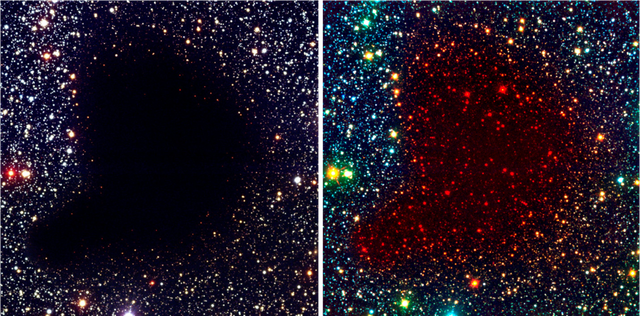Barnard 68, o "HOLE" in the Sky - Daily Science Dose #1

I'm starting a new personal project - DAILY SCIENCE DOSE. Should be about interesting discoveries or phenomena but put into a short body of text (only the direct explanations).
Main features:
- interesting, useful or intriguing facts
- extremely short explanations
- link to the original scientific page
We have a hole in the sky !
If we look to the left picture it seems that all the stars disappeared from the sky.
But it's not. In reality, the star's light is absorbed by the interstellar cloud (which is 400 light years far away from us; it's called Barnard 68). This cloud is oscillating like a water balloon:
- sometimes is inflated by the internal pressure forces.
- sometimes is compressed by the internal gravitational forces.
We can estimate its dust particles from the right picture. There we can see the stars behind the cloud (in infrared). They are reddish because:
- are larger than the blue's wavelength (400 nm)
- are smaller than the red's wavelength (k nm)
Nice idea @fishborne!